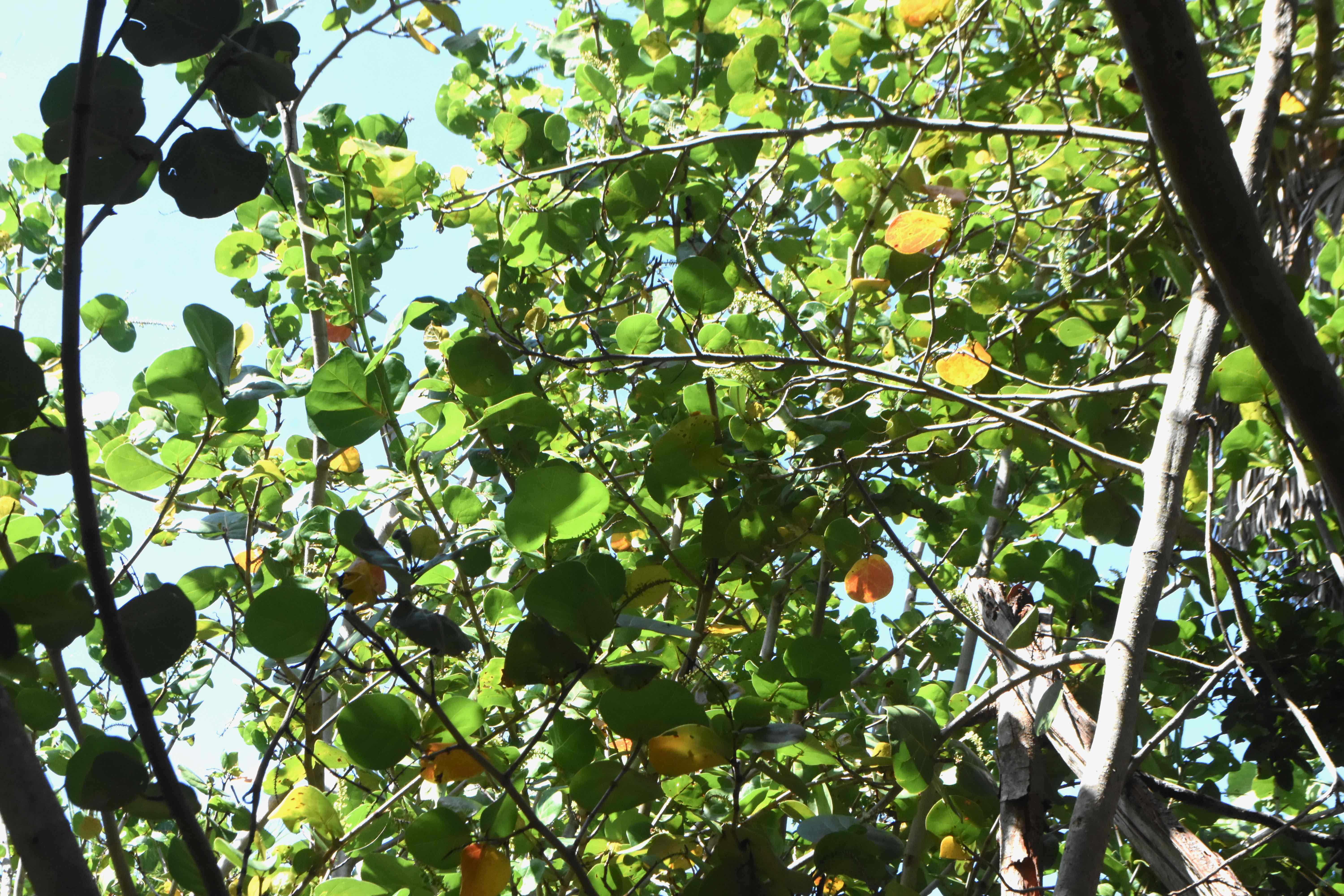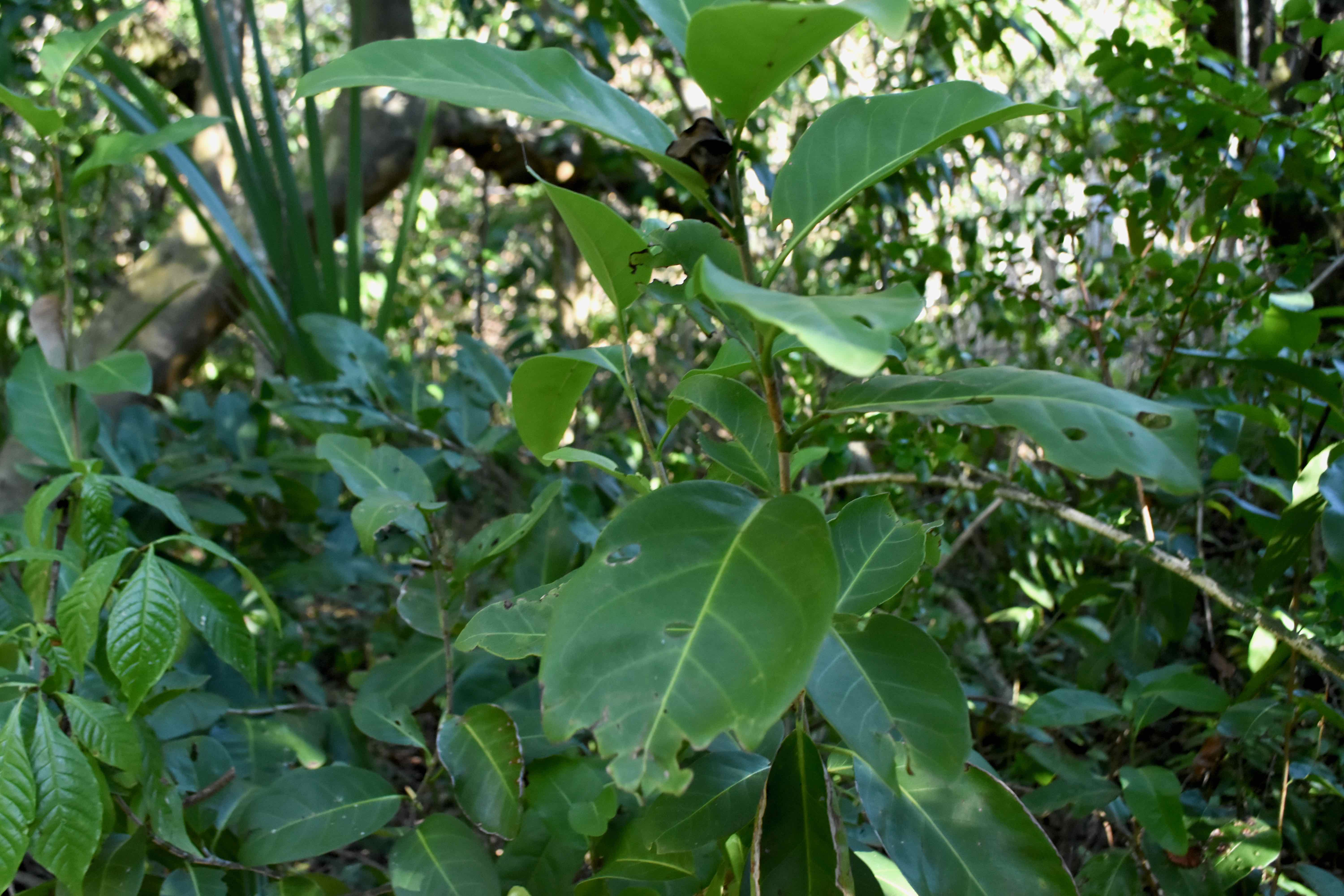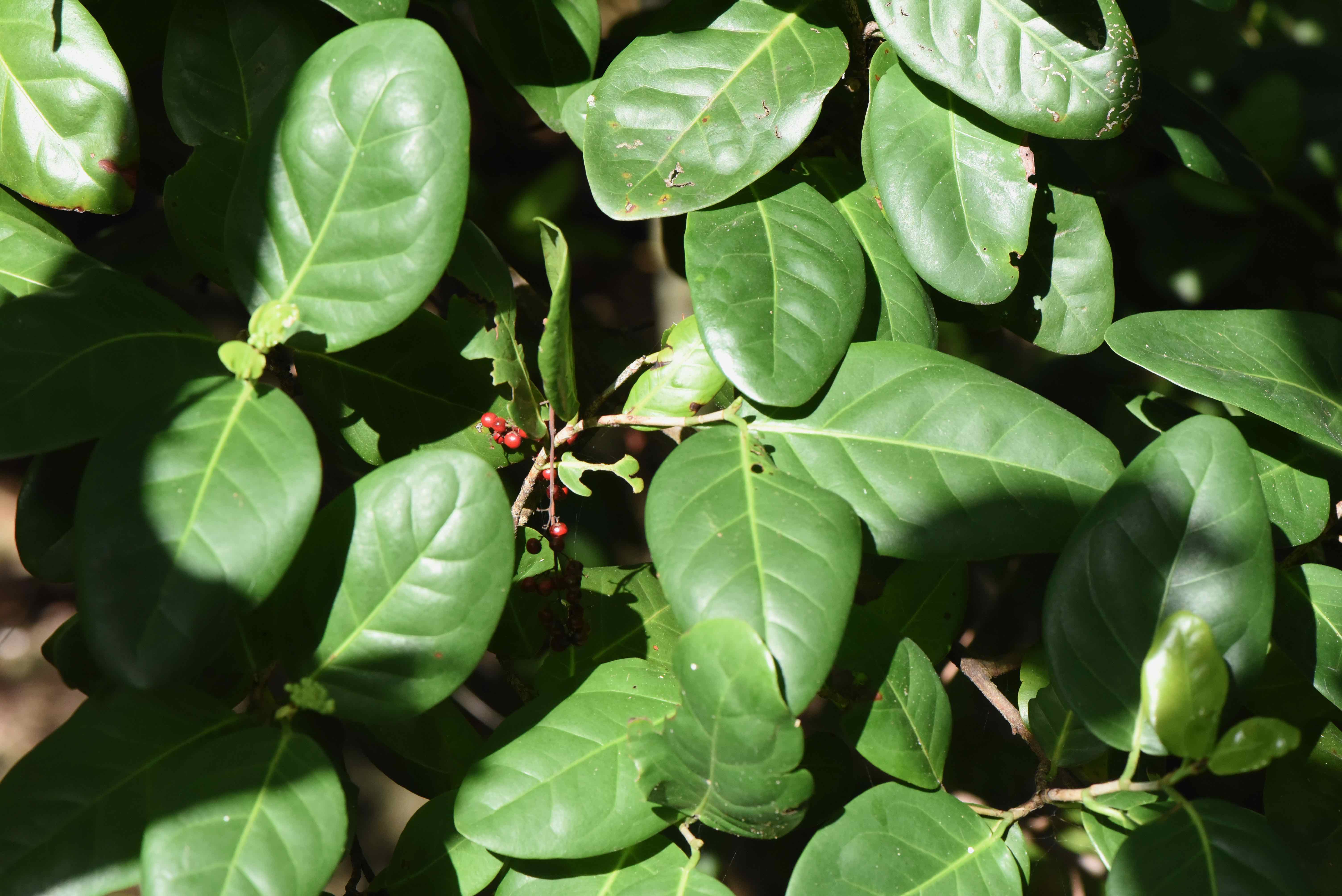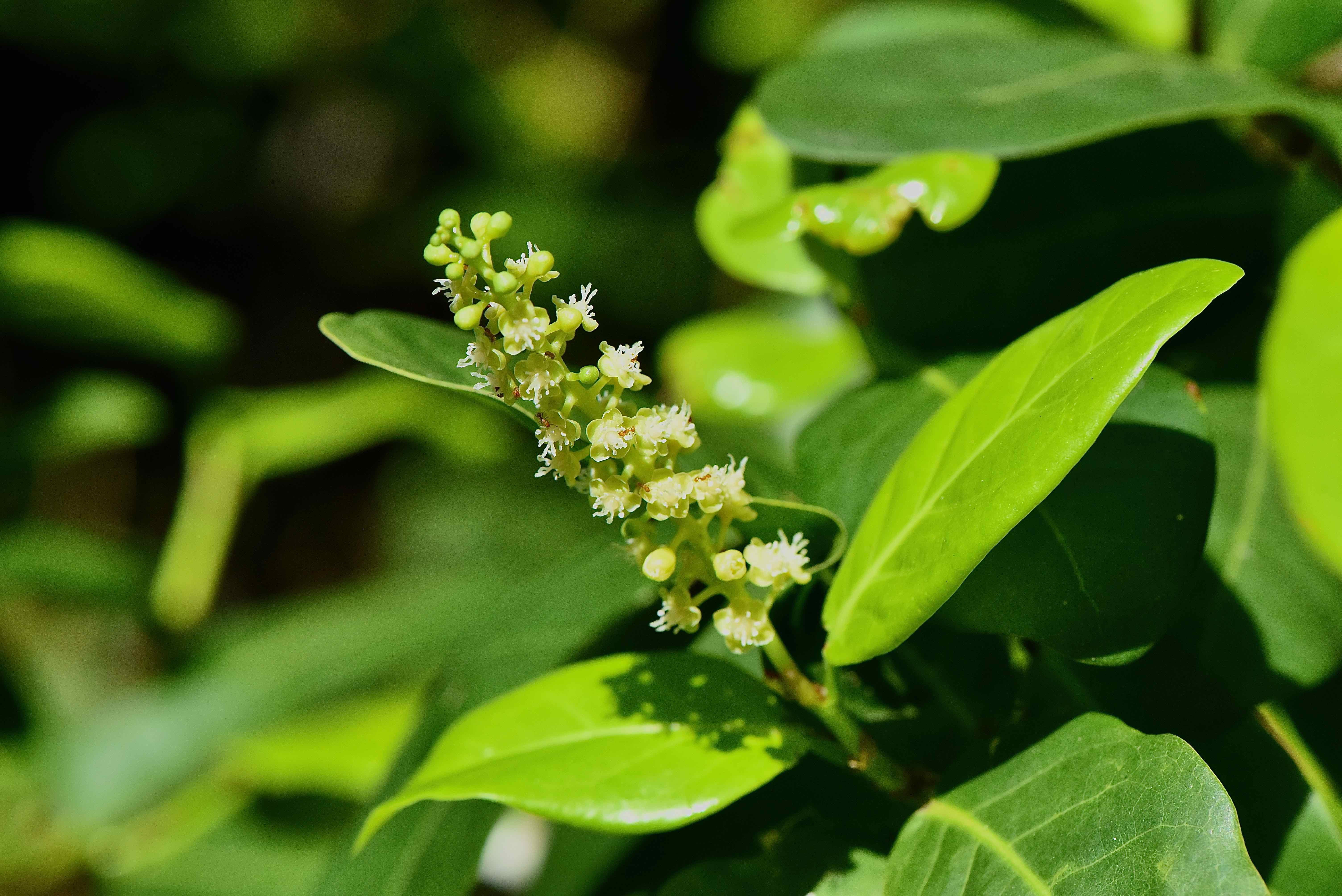
Pigeon plum, photographed at MacArthur Beach State Park, North Palm Beach, Palm Beach County, in May 2022.
There’s a familiar look to pigeon plum, a tree found in coastal and inland hammocks throughout South Florida. It’s a somewhat smaller, less common and lesser known version of seagrape, the tree seemingly ubiquitous along South Florida’s beaches.
The leaves are similar, the bark is similar, the flowers are similar, the fruit is similar. Just a bit smaller, and different enough to distinguish between the two trees. They’re so close that pigeon plum is also called pigeon grape.
The similarities aren’t coincidental. Both are members of Polygonaceae, the buckwheat family, and genus Coccoloba: pigeon plum, aka C diversifolia; seagrape, aka C uvifera.
Pigeon plum is a Florida native (as is seagrape) found only in Florida among the 50 states. Its range includes every South Florida county sans Palm Beach and up the Atlantic coast to Volusia. The Palm Beach County omission (as per the Atlas of Florida Vascular Plants and the U.S. Department of Agriculture’s PLANTS database) is a bit odd, since we’ve seen pigeon plum in Boca Raton’s Gumbo Limbo Nature Center and along the Satinleaf Trail in John D. MacArthur Beach State Park up in North Palm Beach. We’ve also seen it as far inland as the hammock at Fern Forest Nature Center in Coconut Creek.
Pigeon plum’s native range extends through the Caribbean, parts of southern Mexico and Central America.
According to the University of Florida, pigeon plum is on the short side as trees go, reaching 15 to 25 feet in height (some say 25 to 35 feet, some say more), with a spread of 20 to 30 feet. In natural settings, it’s usually has a single trunk, splitting into multiple trunks high up in the crown as it gets older. The shape of the tree changes from triangular to “rounded vase” as it matures.
The outter bark is smooth, a mix of grays and browns and purples as it flakes and breaks into plates and reveals its inner bark. Again, the mottled effect is similar to seagrape.
The leaves can vary widely in size even on the same tree — as indicated by the species name, diversifolia but generally are two to four inches long, simple (one single leaf, no leaflets), oval to oblong in shape, light or dark green, shiny and leathery. Leaves are arranged alternately along the stem. The outter edges are “entire,” meaning smooth, no teeth and no lobes.
Pigeon plum is tardily deciduous, meaning it drops its leaves in late winter and early spring rather than in the fall. As the old leaves drop, new ones appear, often tinged red. The foliage is dense.
The flowers are a plain-looking whitish-green and grow along six-inch stems called racemes; pigeon plum is dioecious, meaning male and female flowers are on separate trees. Pigeon plum will bloom throughout the year but the peak is in spring and summer. The fruit is a grape-like berry that’s less than an inch in diameter and grows in grape-like clusters, going from green to a dark red or purple as it ripens.
As you might guess from the name, pigeon plum, birds eat the fruit, as do a variety of mammals, including raccoons, squirrels and opossums. As for us human types, UF describes the fruit as “somewhat edible.” But, like seagrape, pigeon plum has been used to make jellies and wines. It’s also been used medicinally in the Caribbean to treat stomach problems.
The fruit also has an astringent, or constrictive, quality to it, giving rise to yet another common name: tie-tongue. Daniel Austin, the late Florida Atlantic University botany professor and an expert in how we humans use plants, said Seminoles apparently made raw pigeon plum fruit more palatable by drying and rehydrating it before eating it.
Austin also said the wood has been used for posts and in cabinet-making.
More commonly here in Florida, pigeon plum is used in landscaping, as a specimen tree, as a hedge and even in containers. It can be used in a variety of urban settings, in parking lots, along sidewalks and in highway medians. The one slight downside is its habit of dropping leaves in the spring, which means a bit of raking.
It is relatively salt tolerant, drought tolerant, grows in a variety of light conditions and is an attractive tree. It is, however, a bit sensitive to cold, which limits how far north it can be grown.
Other common names include dove plum, plus the aforementioned pigeon grape and tie-tongue. Again, pigeon plum is a member of Polygonaceae, the buckwheat family.



